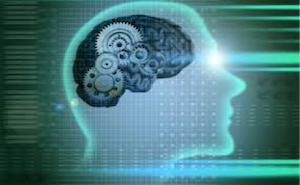 This is the fourth article dealing with cognitive biases that totally screw up your decision making. The first article, Know Thyself, covered anchoring, confirmation bias, herding, hindsight bias, overconfidence, and recency. The second article, Know Thyself II, covered availability, calendar effects, cognitive dissonance, disposition effect, and loss aversion/risk aversion. The third article, Know Thyself III, covered Communal Reinforcement, Endowment Effect, Halo Effect, Overreaction, Prospect Theory, Self-Attribution, and Self-Deception. Most of my education on behavioral investing came from books by James Montier, Hersh Shefrin, and Thomas Gilovich. Two great websites for this stuff are from Tim Richards and Martin Sewell.
This is the fourth article dealing with cognitive biases that totally screw up your decision making. The first article, Know Thyself, covered anchoring, confirmation bias, herding, hindsight bias, overconfidence, and recency. The second article, Know Thyself II, covered availability, calendar effects, cognitive dissonance, disposition effect, and loss aversion/risk aversion. The third article, Know Thyself III, covered Communal Reinforcement, Endowment Effect, Halo Effect, Overreaction, Prospect Theory, Self-Attribution, and Self-Deception. Most of my education on behavioral investing came from books by James Montier, Hersh Shefrin, and Thomas Gilovich. Two great websites for this stuff are from Tim Richards and Martin Sewell.
Ambiguity Aversion
“We don’t mind risk but we hate uncertainty” Tim Richards
"People prefer the familiar to the unfamiliar" Hersh Shefrin
Representativeness
Great companies are great investments. People rely on rules of thumb. People see things the way they ought to be.
"Many of the probabilistic questions with which people are concerned belong to one of the following types: What is the probability that object A belongs to class B? What is the probability that event A originate from process B? What is the probability that process B will generate event A? In answering such questions, people typically rely on the representativeness heuristic, in which probabilities are evaluated by the degree to which A is representative of B, that is, by the degree to which A resembles B. For example, when A is highly representative of B, the probability that A originates from B is judged to be high. On the other hand, if A is not similar to B, the probability that A originates from B is judged to be low." Amos Tversky and Daniel Kahneman
"The best explanation to date of the misperception of random sequences is offered by psychologists Daniel Kahneman and Amos Tversky, who attribute it to people’s tendency to be overly influenced by judgments of “representativeness.” Representativeness can be thought of as the reflexive tendency to assess the similarity of outcomes, instances, and categories on relatively salient and even superficial features, and then to use these assessments of similarity as a basis of judgment. People assume that “like goes with like”: Things that go together should look as though they go together. We expect instances to look like the categories of which they are members; thus, we expect someone who is a librarian to resemble the prototypical librarian. We expect effects to look like their causes; thus, we are more likely to attribute a case of heartburn to spicy rather than bland food, and we are more inclined to see jagged handwriting as a sign of a tense rather than a relaxed personality." Thomas Gilovich
Selective Thinking
Selective thinking is the process by which one focuses on favorable evidence in order to justify a belief, ignoring unfavorable evidence.
Status Quo Bias
The status quo bias is a cognitive bias for the status quo; in other words, people tend to be biased towards doing nothing or maintaining their current or previous decision.
“The example also illustrates what Samuelson and Zeckhauser (1988) call a status quo bias, a preference for the current state that biases the economist against both buying and selling his wine.” Richard Thaler
“One implication of loss aversion is that individuals have a strong tendency to remain at the status quo, because the disadvantages of leaving it loom larger than the advantages. Samuelson and Zeckhauser have demonstrated this effect, which they term the status quo bias.” Richard Thaler
“Both the status quo bias and the endowment effect are part of a more general issue known as loss aversion.” James Montier
Under-reaction
"In predicting the future, people tend to get anchored by salient past events. Consequently, they underreact." Hersh Shefrin
The Under-reaction evidence shows that security prices underreact to news such as earnings announcements. If the news is good, prices keep trending up after the initial positive reaction; if the news is bad, prices keep trending down after the initial negative reaction.
One heuristic that I have made up is "Fear of being Wrong." Pulling the trigger is probably the single most difficult part of being a techncial analyst. You spend a great deal of time putting together a strategy, you test it, you set up rules to fill in the areas that the model doesn't address, and then what? Maybe you paper trade it. Many don't even open a brokerage account and try it with real money. If they do, then pulling the trigger when the strategy/model gives a signal is the next most difficult thing. Trust me, if you cannot pull the trigger (cannot follow your strategy/model), get someone to do it for you.
I believe in these four articles I have covered almost all of the cognitive biases that affect investors and traders. There are many more, however, that you might enjoy reading about. The two websites linked at the top of this article are the best I’ve found. Enjoy!
Know thyself,
Greg Morris
